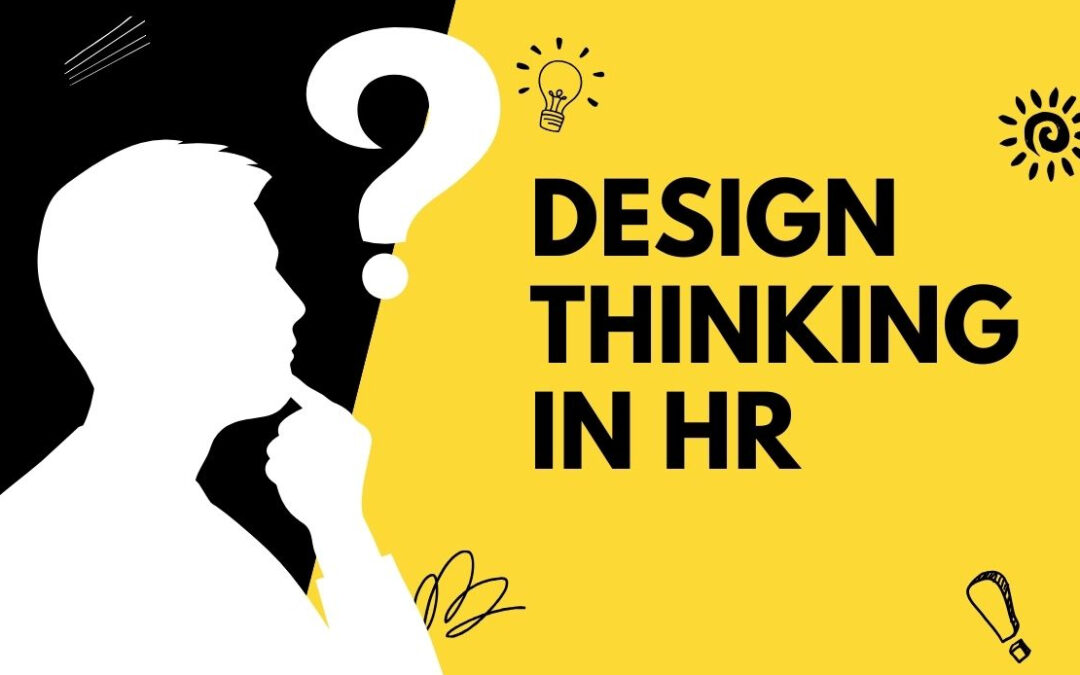Employee engagement remains one of the most discussed topics in human resources (HR). As companies strive to create positive work environments, employee satisfaction and motivation are seen as key drivers of organizational success. However, traditional approaches to HR often fall short in addressing the dynamic and evolving needs of the workforce. This is where design thinking comes into play—a new approach that is revolutionizing the way HR leaders engage with employees. Design thinking, originally a problem-solving tool used in product design, has now made its way into HR practices, offering a fresh perspective on enhancing employee experiences.
In this article, we’ll explore how design thinking can transform employee engagement in HR. We’ll dive deep into its principles, step-by-step frameworks, real-world examples, and how businesses can integrate this innovative approach into their HR strategies. Whether you’re an HR leader, business strategist, or part of an HR innovation team, understanding design thinking’s role in employee engagement can provide invaluable insights into creating a more engaged and productive workforce.
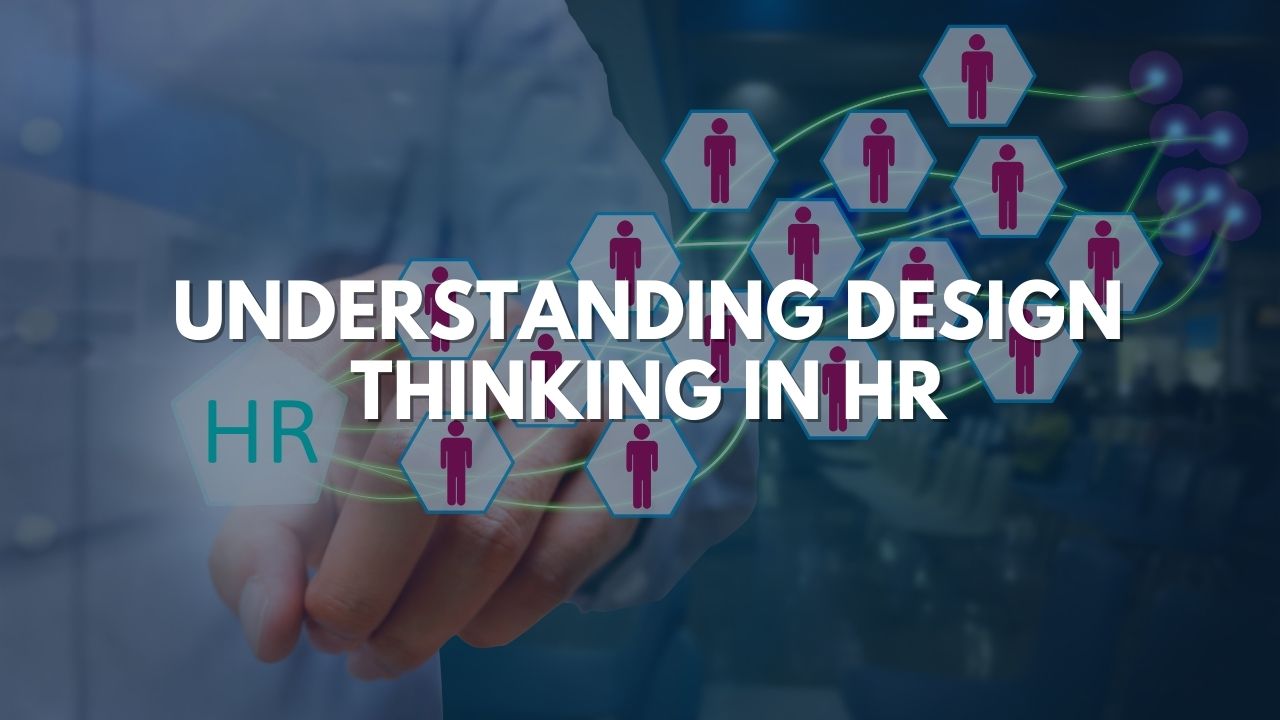
1. Understanding Design Thinking in the Context of HR
Design thinking is an approach that encourages human-centered innovation by emphasizing empathy, creativity, and problem-solving. It is a solution-oriented methodology that focuses on understanding the needs and experiences of end-users—in the case of HR, employees.
What is Design Thinking?
At its core, design thinking is about deeply understanding the challenges faced by individuals or groups and using that understanding to create solutions that improve their experiences. The methodology involves five key stages:
- Empathize – Gain a deep understanding of the needs and emotions of the people involved.
- Define – Clearly articulate the problem you are aiming to solve.
- Ideate – Brainstorm creative solutions and alternatives.
- Prototype – Create tangible representations of your ideas.
- Test – Evaluate and refine your prototypes based on feedback.
While these steps are often associated with product design, they can be applied effectively in HR to improve employee engagement, satisfaction, and overall experience.
Why Design Thinking in HR?
Traditional HR methods are often rigid, focusing primarily on processes and policies. This can lead to a disengaged workforce, as employees may feel their needs are overlooked or misunderstood. Design thinking offers a more flexible, human-centered approach that values the unique needs of each employee.
By embracing design thinking, HR leaders can break away from conventional practices and create solutions that not only align with organizational goals but also prioritize the well-being of employees. It brings creativity, innovation, and empathy into the workplace, which are essential ingredients for fostering engagement.

2. The Key Benefits of Design Thinking for Employee Engagement
The integration of design thinking into HR strategies brings multiple benefits that can enhance employee engagement. Let’s look at how this approach positively impacts both organizations and employees.
Increased Empathy and Understanding
Design thinking’s foundation of empathy helps HR professionals see things from an employee’s perspective. Rather than relying on assumptions or generic surveys, HR teams can gather real insights by engaging directly with employees. This helps identify hidden issues, address specific concerns, and ultimately create a work environment that employees feel truly connected to.
Improved Problem-Solving
By focusing on understanding employee challenges, design thinking encourages HR teams to think outside the box. This results in innovative solutions for everything from employee wellness programs to performance management systems. Design thinking helps HR teams solve problems creatively, leading to more effective, personalized solutions that improve engagement.
Better Communication and Collaboration
Design thinking promotes open communication and collaboration. HR leaders work closely with employees during the “empathize” and “define” stages, ensuring that the solutions they develop are aligned with real employee needs. This collaborative process fosters a sense of ownership and trust, as employees feel that their voices are being heard and that they are actively contributing to positive change.
Enhanced Employee Experience
Employee engagement is tightly linked to the overall employee experience (EX). Design thinking’s emphasis on continuous feedback and iteration allows HR teams to make ongoing improvements that cater to employees’ evolving expectations. This proactive approach to employee experience enhances satisfaction and fosters a more loyal and motivated workforce.
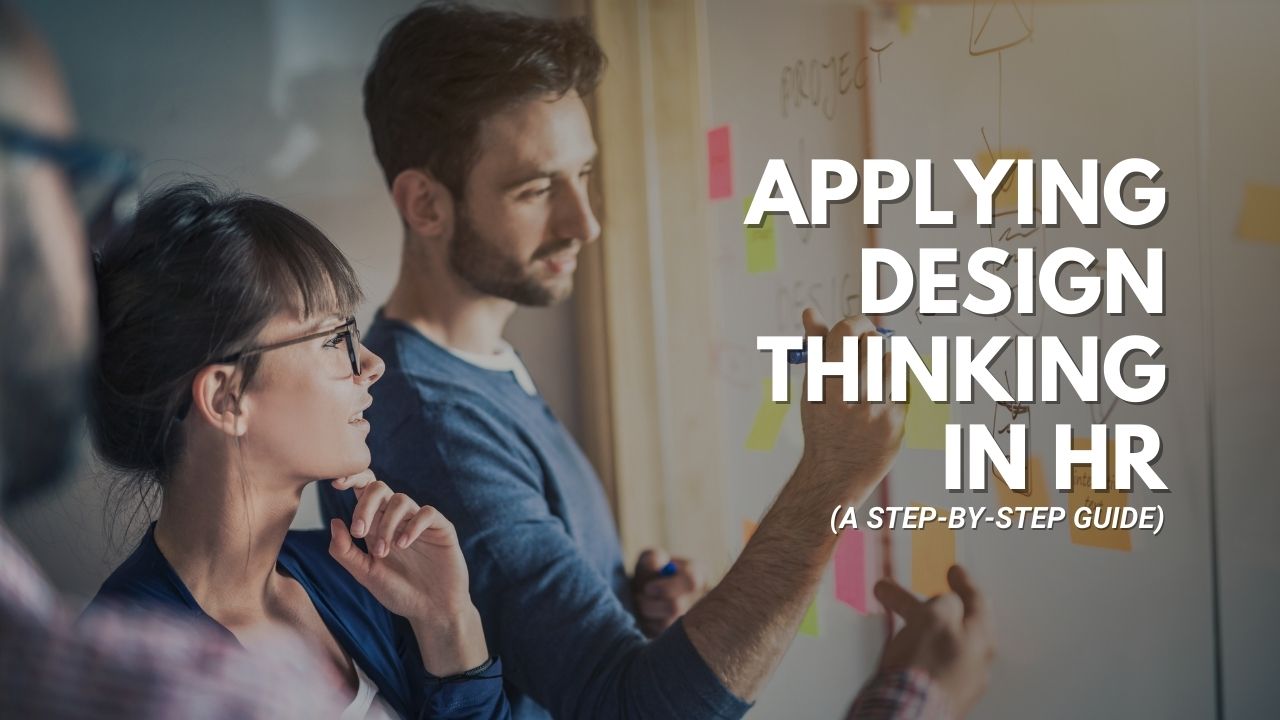
3. Step-by-Step Guide: Applying Design Thinking in HR
Now that we understand what design thinking is and its benefits, let’s look at how HR leaders can implement this approach step by step. Here’s how you can begin transforming employee engagement through design thinking.
Step 1: Empathize – Get to Know Your Employees
The first stage of design thinking is empathy. In HR, this means developing a deep understanding of the experiences, concerns, and desires of your employees. Instead of assuming what employees need, take the time to listen and observe.
Techniques for Empathy in HR:
- Interviews and Focus Groups: Hold one-on-one conversations or small group discussions with employees from different departments and levels. Ask them about their experiences, challenges, and what they want from the organization.
- Employee Surveys: Design open-ended surveys that give employees the freedom to express their opinions in their own words.
- Observation: Observe how employees interact with their workspace, technology, and each other. Look for patterns in behavior that might point to areas for improvement.
This stage is crucial because it helps HR professionals gather authentic insights. By placing yourself in the shoes of your employees, you can better understand their true needs, rather than relying on surface-level data.
Step 2: Define – Clarify the Problem
Once you’ve gathered your insights, it’s time to define the problem. Design thinking encourages clarity and specificity, so this stage focuses on transforming the insights from the empathy phase into a well-defined problem statement. This problem statement should focus on employee engagement challenges and frame them in a way that leads to actionable solutions.
For example:
- Instead of saying, “Employee engagement is low,” a more defined problem might be, “Employees feel disconnected from leadership, leading to a lack of trust in company goals.”
Having a clearly defined problem helps guide the ideation and solution development stages. It ensures that HR teams are working toward solving the right problem and not just addressing symptoms.
Step 3: Ideate – Brainstorm Potential Solutions
Now comes the fun part: ideation. This stage is all about creativity and thinking beyond traditional HR solutions. The goal is to come up with as many possible solutions as you can, without judgment or limitations. Use brainstorming techniques to generate innovative ideas for improving employee engagement.
Ideation Techniques:
- Brainstorming Sessions: Gather HR leaders, managers, and even employees to brainstorm potential solutions.
- Mind Mapping: Visualize possible solutions by mapping out ideas and seeing how they connect to each other.
- Co-Creation Workshops: Invite employees to participate in solution development. By involving them in the ideation phase, you ensure that the solutions meet their needs.
This stage often results in many creative and out-of-the-box ideas. The key is to think broadly and not limit your thinking to what has been done before.
Step 4: Prototype – Create Tangible Solutions
In the prototyping stage, HR teams take their best ideas and develop initial, low-cost versions. These prototypes can be anything from new onboarding programs, employee wellness initiatives, or revamped communication channels.
Prototyping Examples:
- Employee Feedback Channels: Create a simple, accessible platform where employees can regularly share feedback and suggest ideas for improvement.
- Revamped Recognition Programs: Develop an early-stage version of an employee recognition program that is easy to scale.
The goal of prototyping is not perfection but to create something tangible that can be tested with real employees. It should be a starting point that can be refined based on feedback.
Step 5: Test – Evaluate and Refine
Testing is where you evaluate your prototypes with real employees. Get feedback from them and observe how they interact with the new systems or solutions you’ve put in place. Use this feedback to refine your solutions and make necessary adjustments.
Testing Methods:
- Pilot Programs: Run a small-scale version of your prototype with a select group of employees. Gather their feedback and adjust the solution as needed.
- Surveys and Feedback Loops: After employees interact with the new system, ask them for detailed feedback on what worked and what didn’t.
Testing and iteration are essential because employee needs and expectations are constantly changing. By regularly testing and refining, you ensure that your engagement strategies remain relevant and effective.

4. Success Stories: Real-World Examples of Design Thinking in HR
Several organizations have successfully implemented design thinking to improve employee engagement and overall HR practices. Here are a few examples to inspire HR leaders and innovation teams:
Case Study 1: Deloitte’s Greenhouse Program
Deloitte introduced its “Greenhouse” program, a design thinking-inspired initiative aimed at solving organizational challenges. The program’s focus was on deep, empathic interviews and group ideation sessions to create innovative HR solutions. The result was a set of tailored interventions that not only boosted employee engagement but also aligned closely with the company’s broader business goals.
Case Study 2: SAP’s Employee Experience Initiative
SAP adopted design thinking to improve its employee experience, especially in terms of talent development and performance management. By engaging employees in workshops and feedback sessions, SAP was able to co-create solutions that enhanced engagement and led to higher retention rates among key talent.
These case studies show that design thinking isn’t just theoretical—it can be successfully applied in HR practices to achieve tangible results. By embracing this methodology, HR leaders can create lasting change and improve employee engagement across their organizations.
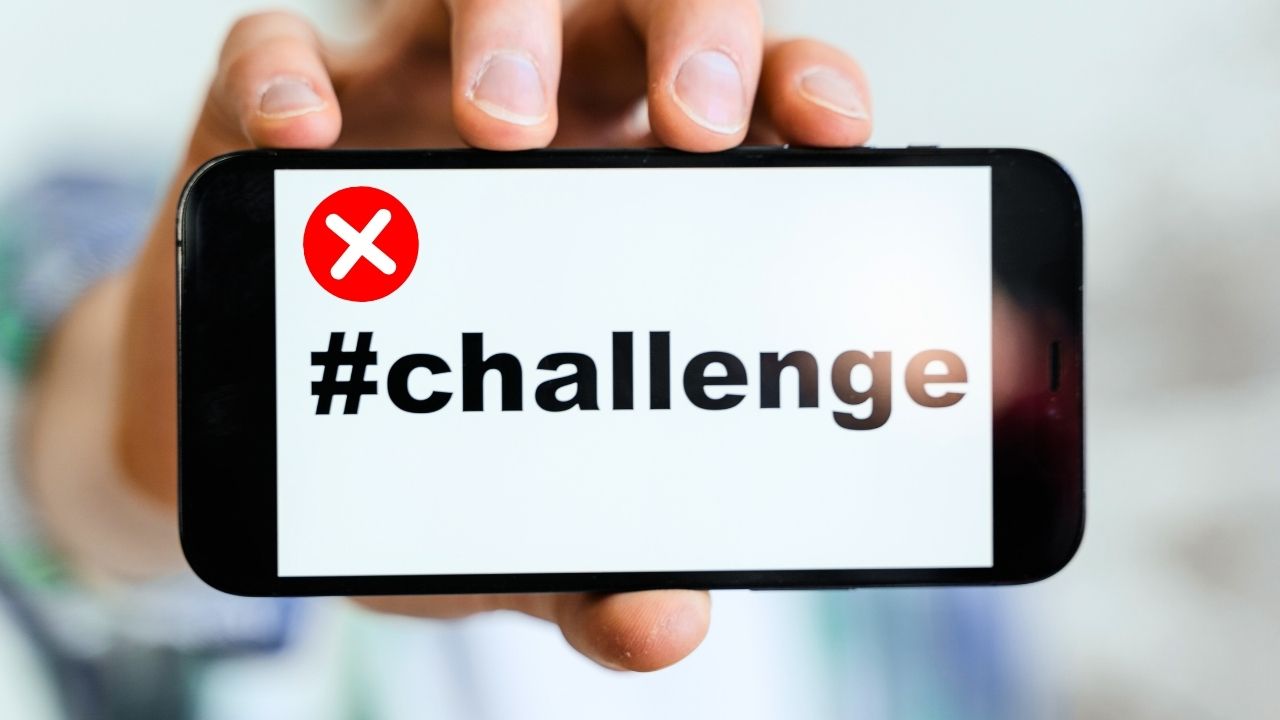
5. Overcoming Challenges: Common Pitfalls in Applying Design Thinking to HR
While design thinking offers a powerful approach to enhancing employee engagement, its application is not without challenges. HR teams must be mindful of potential pitfalls and obstacles that can derail the process. By anticipating these challenges, HR professionals can develop strategies to overcome them and ensure the success of their design thinking initiatives.
Challenge 1: Resistance to Change
One of the biggest challenges organizations face when introducing design thinking in HR is resistance to change. Employees and leadership may be accustomed to traditional HR processes and may be hesitant to adopt a new approach. Resistance often stems from uncertainty about the new process, lack of understanding, or fear of the unknown.
How to Overcome It:
- Education and Communication: HR leaders should take the time to educate employees and leaders about the benefits of design thinking. By communicating the value of this new approach and showing its potential to improve employee experience, you can reduce resistance.
- Start Small: Rather than overhauling the entire HR strategy, begin with smaller pilot projects to showcase the effectiveness of design thinking in practice. This gradual approach allows stakeholders to experience the benefits firsthand and increases buy-in.
- Involve Leadership: Having strong support from top leadership is critical. When leaders champion the design thinking approach, it helps create a culture of openness to change throughout the organization.
Challenge 2: Limited Resources and Time
Design thinking requires time, resources, and effort, which can be a concern for HR departments with limited budgets or tight timelines. The process of empathy-building, prototyping, and testing can be resource-intensive, which might lead some HR teams to question whether they can afford to invest in it.
How to Overcome It:
- Allocate Resources Wisely: Start by dedicating a small team or individual to manage the design thinking initiative. This allows for focused efforts without overwhelming the HR department.
- Use Low-Cost Prototyping: Prototypes don’t have to be expensive or complex. Low-cost prototypes, such as mock-ups or pilot programs, can be used to test ideas before rolling them out at a larger scale.
- Leverage Technology: Technology can streamline the design thinking process, from employee surveys and feedback tools to collaboration platforms. Investing in the right technology can help make the process more efficient.
Challenge 3: Lack of Employee Participation
For design thinking to work effectively, employee input is essential. However, HR teams may struggle to get employees actively involved in the process, especially if employees are disengaged or don’t see the value in contributing their ideas.
How to Overcome It:
- Create a Safe Space for Feedback: Ensure that employees feel comfortable sharing their thoughts and ideas without fear of judgment. Create an inclusive, non-hierarchical environment where employees at all levels feel their input is valued.
- Offer Incentives: Motivate employees to participate by offering incentives such as recognition or small rewards for their contributions.
- Regularly Ask for Feedback: Engagement doesn’t end once the initial survey is completed. HR teams should continuously ask for feedback and input throughout the design thinking process to maintain employee interest and participation.
Challenge 4: Maintaining Momentum
Design thinking can be a long-term commitment, and it’s easy for HR teams to lose momentum. If results are not immediate or if employees don’t see rapid changes, they might become disillusioned with the process.
How to Overcome It:
- Set Realistic Expectations: Understand that design thinking is a process, not a quick fix. HR leaders should set realistic expectations for how long it will take to see tangible results.
- Celebrate Small Wins: Recognize and celebrate milestones along the way, such as successfully piloting a new initiative or receiving positive feedback from employees. Celebrating small wins helps keep momentum going.
- Continuous Improvement: Design thinking is about iteration and refinement. By focusing on incremental improvements, HR teams can maintain engagement and demonstrate progress over time.
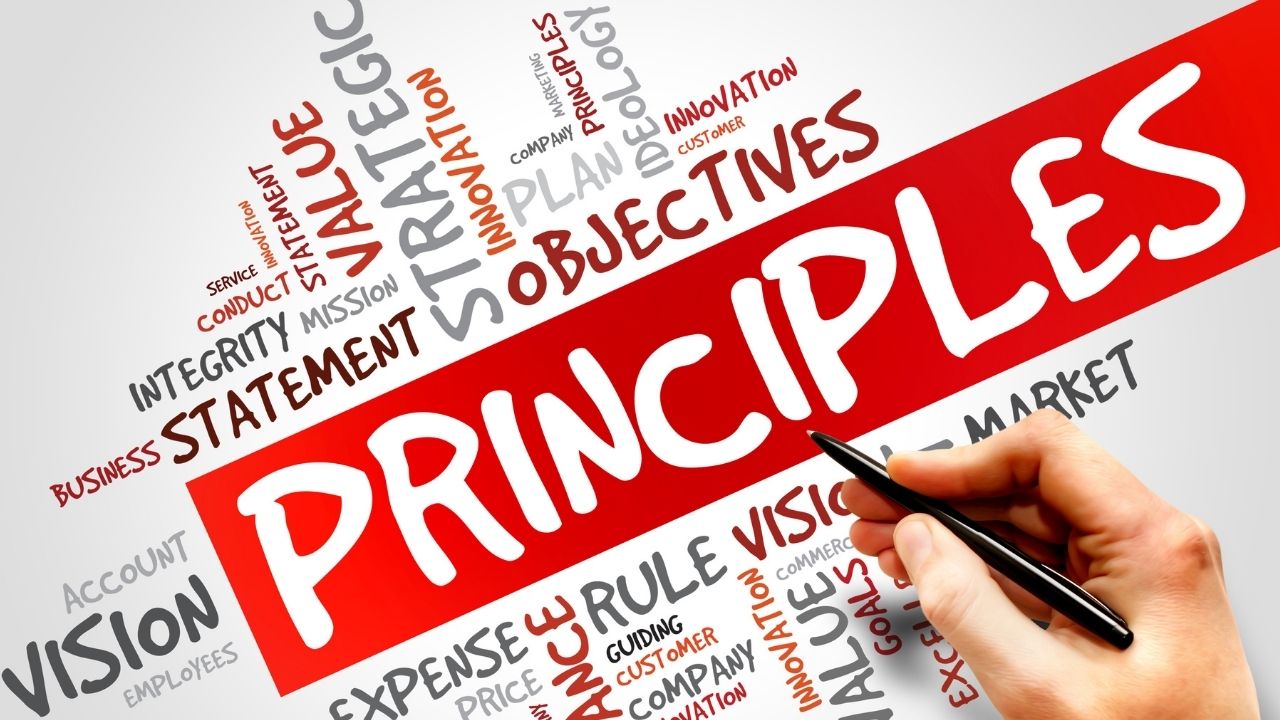
6. Key Principles for Successful Implementation of Design Thinking in HR
Implementing design thinking in HR requires more than just following a set of steps—it involves adopting certain principles that guide HR teams in creating meaningful, human-centered solutions for employee engagement. These principles foster a culture of innovation and ensure the approach’s success in the long term.
Principle 1: Empathy Above All Else
Empathy is at the core of design thinking. In HR, this means truly understanding the experiences, pain points, and needs of employees. HR leaders must invest time in building relationships and engaging with employees to grasp their concerns on a deeper level. Only then can HR teams develop solutions that are genuinely effective and impactful.
Principle 2: Collaboration and Co-Creation
Design thinking thrives on collaboration. HR teams should work closely with employees, leadership, and other stakeholders to co-create solutions. When employees are involved in the solution development process, they are more likely to feel valued and engaged in the changes being made.
Principle 3: Iteration and Flexibility
One of the strengths of design thinking is its focus on continuous iteration. HR leaders should be prepared to refine and adjust their solutions as they receive feedback. Flexibility allows HR teams to keep pace with changing employee needs and business environments, ensuring that engagement initiatives remain relevant and effective.
Principle 4: Experimentation and Risk-Taking
Design thinking encourages experimentation and taking calculated risks. HR leaders must be open to trying new ideas and approaches, even if they are unsure of the outcome. Embracing failure as a learning opportunity is crucial for fostering innovation and improving employee engagement.
Principle 5: Holistic Approach
Design thinking emphasizes a holistic view of the problem at hand. In HR, this means considering all aspects of the employee experience, from onboarding to career development to workplace culture. Solutions should be comprehensive and address not just isolated issues but the broader employee experience.

7. Measuring the Impact of Design Thinking on Employee Engagement
To assess the success of design thinking in HR, it is essential to measure the impact it has on employee engagement. Key performance indicators (KPIs) can help HR teams track progress and make data-driven decisions about where to focus their efforts.
Common KPIs for Measuring Employee Engagement:
- Employee Satisfaction Surveys: Regular surveys can help track overall satisfaction and highlight areas where improvements are needed.
- Retention Rates: A positive employee experience often leads to higher retention rates. HR teams should monitor employee turnover and use this data to assess the effectiveness of engagement initiatives.
- Employee Net Promoter Score (eNPS): This metric measures employees’ likelihood to recommend their organization as a place to work, which is a good indicator of engagement.
- Participation Rates in Engagement Programs: High participation rates in engagement activities or feedback initiatives suggest that employees are actively engaged and invested in the company.
- Performance and Productivity: Engaged employees tend to be more productive. Monitoring performance metrics can provide insights into the link between engagement and overall business success.
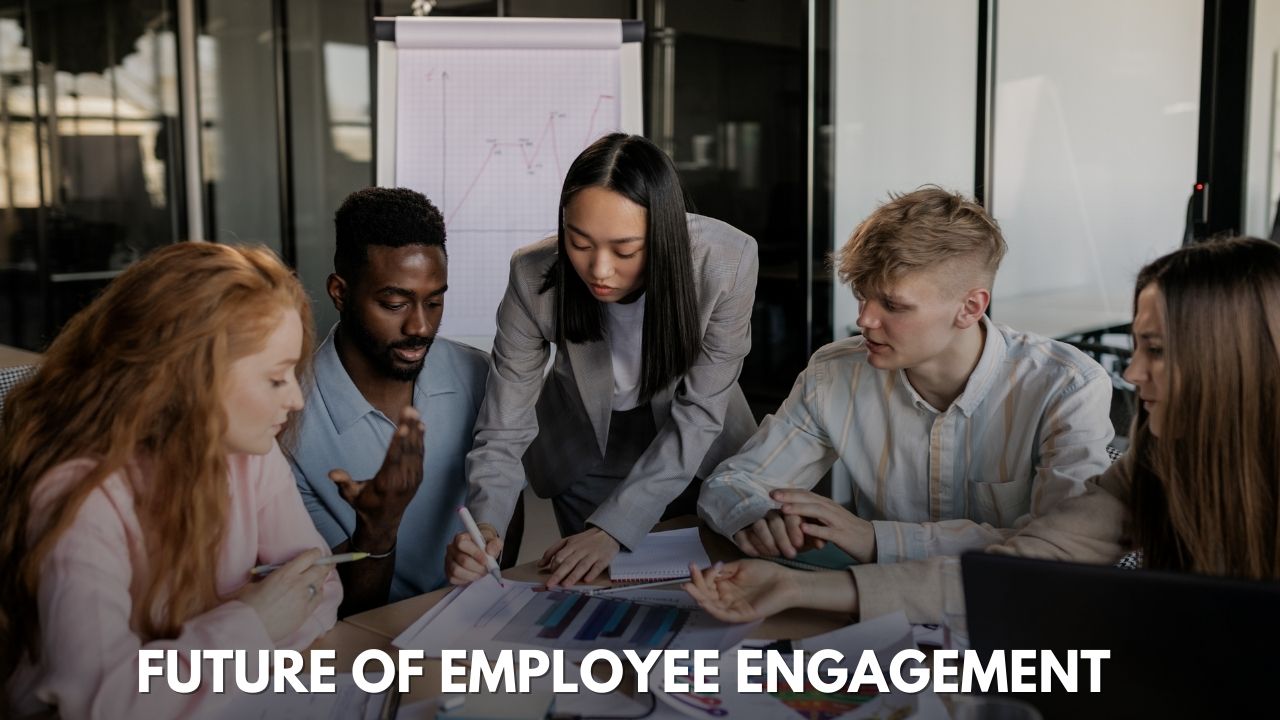
8. The Future of Employee Engagement: The Role of Design Thinking
As organizations continue to evolve, employee engagement strategies must also adapt. Design thinking is poised to play a central role in the future of HR, offering a way to create dynamic, employee-centric workplaces that drive long-term success.
Trends Shaping the Future:
- Personalized Employee Experiences: As more organizations adopt design thinking, we can expect to see an increase in personalized experiences that cater to the unique needs and preferences of individual employees.
- AI and Data-Driven Insights: The integration of artificial intelligence and data analytics into design thinking will allow HR teams to gain deeper insights into employee behaviors and engagement levels, leading to more targeted and effective solutions.
- Continuous Feedback Loops: With the rise of employee feedback platforms, HR teams will have the tools to continuously gather input from employees and refine their engagement strategies in real-time.
Design thinking represents a shift toward more human-centered, innovative HR practices. As the workplace continues to evolve, this approach will be crucial in creating environments that foster collaboration, creativity, and, ultimately, higher levels of employee engagement.
Conclusion
Design thinking in HR is more than just a trend; it is a revolutionary approach to solving complex employee engagement challenges. By embracing empathy, creativity, and iterative problem-solving, HR leaders can create solutions that resonate deeply with employees and foster a culture of engagement. With the right mindset, strategy, and commitment, design thinking can transform the employee experience and drive long-term organizational success.

